

4 Ways Microsoft is Making Learning More Accessible. CAST - Free Learning Tools. Add Voice Comments to Google Documents With Kaizena. Assistive Technology: Resource Roundup. An educator's and parent's guide to websites, blogs, articles, and videos that provide information and tools related to understanding, selecting, and assessing assistive technology and accessible instructional materials.
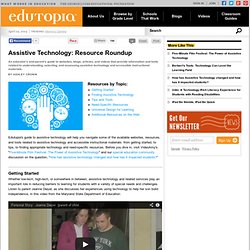
Getting Started Whether low-tech, high-tech, or somewhere in between, assistive technology and related services play an important role in reducing barriers to learning for students with a variety of special needs and challenges. Listen to parent Jeanne Dwyer, as she discusses her experiences using technology to help her son build independence, in this video from the Maryland State Department of Education: For Educators For general information on assistive technology (AT) and accessible instructional materials (AIM), including relevant federal laws, the National Center on Accessible Instructional Materials at CAST provides a helpful outline. For Parents Back to Top Finding Assistive Technology Tips and Tools Need-specific Resources Sensory Impairments Cognitive Differences. Kickoff Panel: Personalized Learning.
Date(s) and Time: October 2, 201307:00 pm - 08:30 pm EST Provided by: Connected Educators Description: It was a key theme in CEM 2012, and if anything it’s a bigger topic this year, influencing pedagogy at every level.
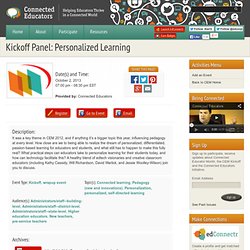
Using Google products – Accessibility – Google. In this section, we go over the accessibility features of our products for 2 groups of people: If you notice information that’s missing, have questions or feedback, or want to offer other ideas for ways people with disabilities can use Google products, we want to hear from you.
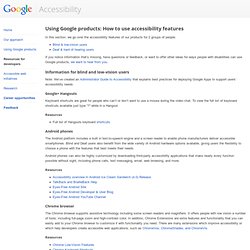
Information for blind and low-vision users Note: We’ve created an Administrator Guide to Accessibility that explains best practices for deploying Google Apps to support users’ accessibility needs. Google+ Hangouts Keyboard shortcuts are great for people who can’t or don’t want to use a mouse during the video chat. Resources Full list of Hangouts keyboard shortcuts Android phones The Android platform includes a built in text-to-speech engine and a screen reader to enable phone manufacturers deliver accessible smartphones.
Chrome browser The Chrome browser supports assistive technology including some screen readers and magnifiers. Power Up What Works. The Math Instructional Strategy Guides The Instructional Strategy Guides provide you with a pathway to learning.

Each Guide focuses on key areas of Math: representation, reasoning, communication, and making sense of problems. It includes information about relevant Common Core State Standards, evidence-based practices, and ways to differentiate instruction with technology. English Language Arts. The English Language Arts (ELA) Instructional Strategy Guides The Instructional Strategy Guides provide you with a pathway to learning.

AEM: Supporting Learners. AEM: Open Educational Resources (OERs) Open educational resources (OERs) are defined by UNESCO as "teaching, learning, and research materials in any medium, digital or otherwise, that reside in the public domain or have been released under an open license that permits no-cost access, use, adaptation, and redistribution by others with no or limited restrictions.
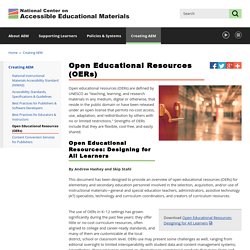
" Strengths of OERs include that they are flexible, cost-free, and easily shared. Understand what you read. Nonfiction Literacy and Current Events. Today’s Education Should Be About Giving Learners Voice and Choice. Some of the recurring themes of my conference presentations and blog posts include: The underlying theme of all of my ideas, of all of my blog posts is about setting up the conditions where learners’ choice and voice flourish.
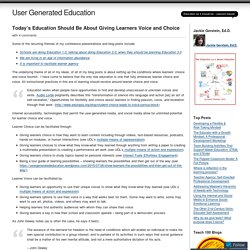
I have come to believe that the only real education is one that fully embraces learner choice and voice. All instructional practices in this era of learning should revolve around learner choice and voice: Education works when people have opportunities to find and develop unaccessed or unknown voices and skills. Audre Lorde poignantly describes this “transformation of silence into language and action [as] an act of self-revelation.”
Internet accessibility, technologies that permit the user-generated media, and social media allow for unlimited potential for learner choice and voice. Learner Choice can be facilitated through: Learner Voice can be facilitated by: As John Dewey notes (as is often the case, he says it best): Like this: Like Loading... InstaGrok.com.